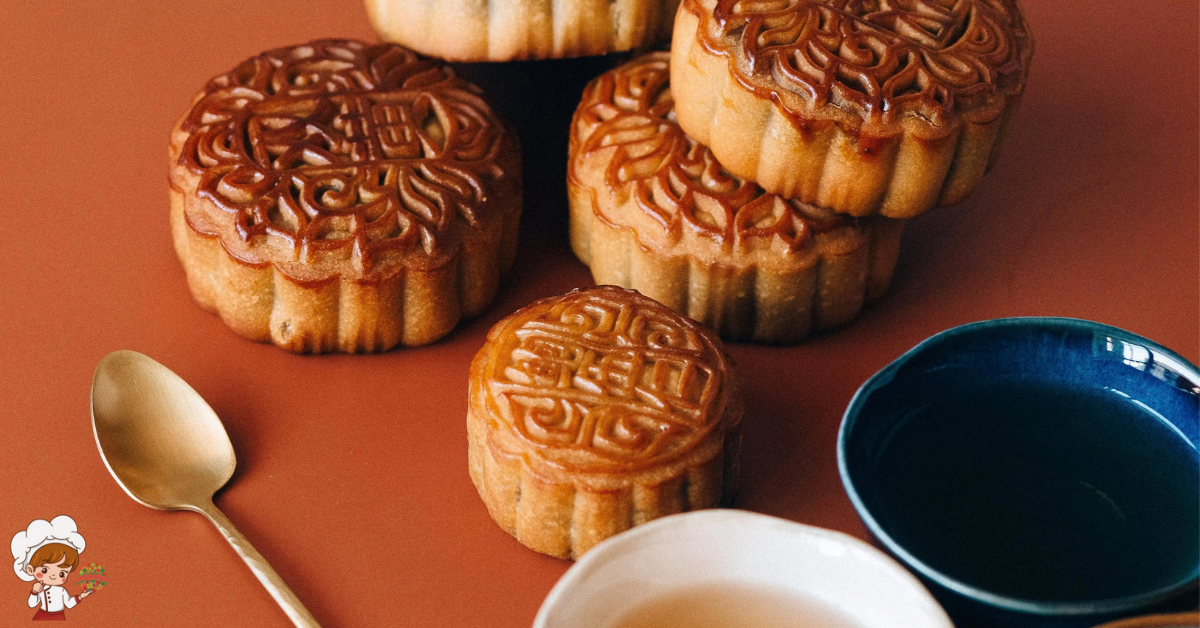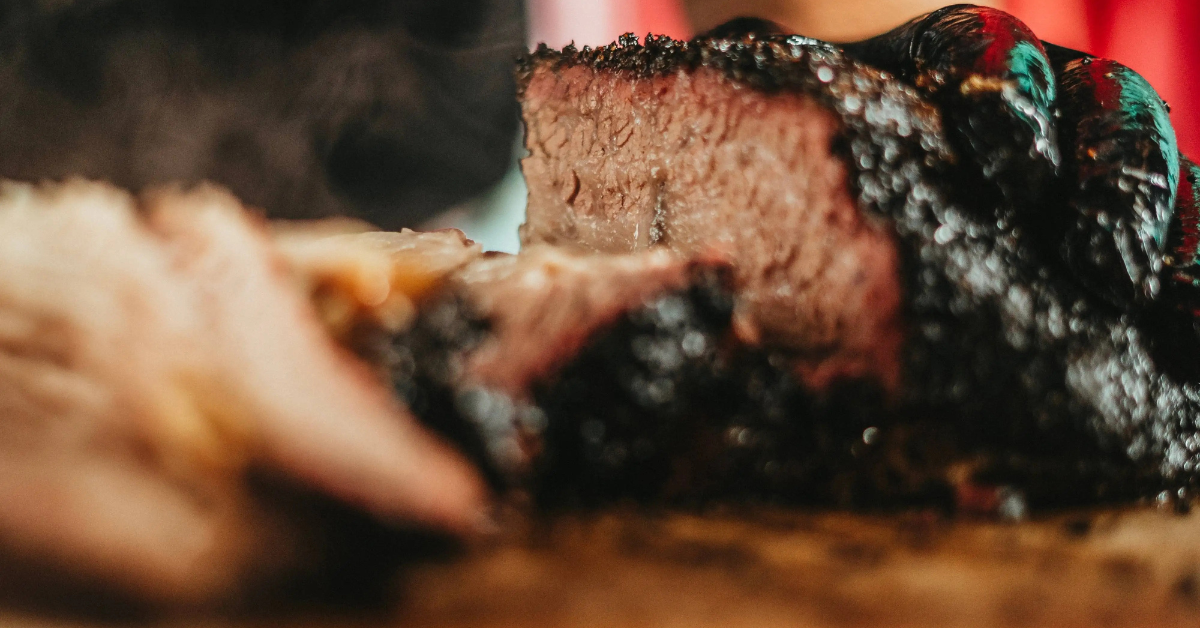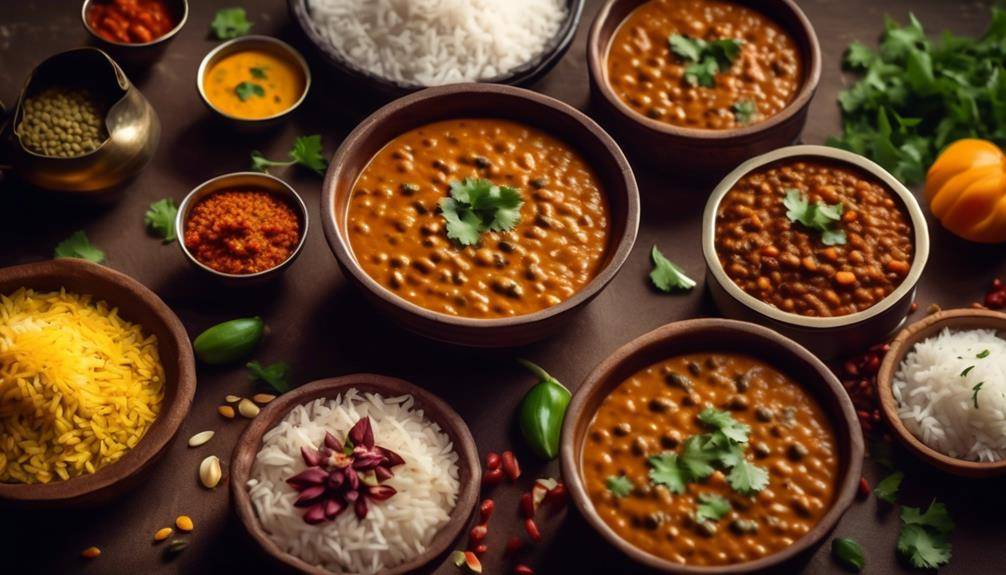The Best Traditional Chinese Desserts For Special Occasions

Are you looking to satisfy your sweet tooth with traditional Chinese desserts for special occasions? Look no further! These delightful treats are sure to please your taste buds and add a touch of cultural flair to any celebration. From the symbolic and sweet mooncakes to the fragrant and refreshing osmanthus jelly, there is a dessert for every occasion. Indulge in the nutty and silky almond tofu or savor the flaky goodness of the wife cake. Whether you’re celebrating a holiday or simply want to try something new, these traditional Chinese desserts are guaranteed to be a hit. So, why wait? Treat yourself to a taste of China’s rich culinary heritage and make your special occasions even sweeter.
Mooncakes: Symbolic and Sweet
Mooncakes are traditionally enjoyed during special occasions and hold symbolic significance in Chinese culture. These delectable treats are not only delicious but also carry deep meaning behind their intricate designs and flavors. Symbolism plays a crucial role in mooncakes, with each element representing something significant.
One of the most common symbols found on mooncakes is the moon itself, which represents unity and completeness. The round shape of the mooncake symbolizes the reunion of families and friends during festivals like the Mid-Autumn Festival. Another symbol often seen on mooncakes is the Chinese characters for longevity, prosperity, and good fortune, which are imprinted on the top of the cake. These symbols are believed to bring blessings and good luck to those who consume them.
In addition to their symbolic significance, mooncakes come in a variety of flavors that cater to different tastes. Traditional mooncakes are made with a sweet lotus seed paste filling, which is smooth and slightly sweet. This classic flavor is loved by many and considered a staple during festivals. However, there are also other flavors available, such as red bean paste, black sesame, and salted egg yolk. These flavors offer a unique twist to the traditional mooncake, providing options for those who prefer different tastes.
Whether you enjoy the traditional lotus seed paste mooncakes or prefer the unique flavors, one thing is for certain – mooncakes are an essential part of Chinese culture and special occasions. Their symbolic significance and diverse flavors make them a must-have treat during festivals, bringing joy and togetherness to families and friends. So, the next time you indulge in a mooncake, remember the rich symbolism behind it and savor every bite.
Tangyuan: Glutinous Rice Balls Delight
During special occasions, you can enjoy the delightful Tangyuan, which are glutinous rice balls. Tangyuan is a traditional Chinese dessert that is often served during festivals such as the Lantern Festival and Winter Solstice. Made from glutinous rice flour, these small, round balls are soft and chewy, providing a delightful texture that is sure to please your taste buds.
One of the great things about Tangyuan is the wide variety of flavors and fillings available. From sweet to savory, there is a Tangyuan variation to suit every palate. Some popular options include black sesame, red bean, peanut, and even meat-filled Tangyuan. Each variation offers a unique flavor profile and adds an extra element of excitement to the dessert.
When it comes to serving Tangyuan, there are several suggestions that can enhance your dining experience. Traditionally, Tangyuan is served in a sweet soup made with ginger, rock sugar, and water. The warm soup complements the soft texture of the rice balls and provides a comforting and satisfying treat. You can also try serving Tangyuan with a drizzle of sweet sesame sauce or a sprinkle of crushed peanuts for added flavor and texture.
In addition to its delicious taste, Tangyuan also carries symbolic meanings in Chinese culture. The round shape of the rice balls represents completeness and unity, making it a popular dessert to share with loved ones during special occasions. So, the next time you’re celebrating a festival or hosting a gathering, consider adding Tangyuan to your menu for a delightful and meaningful dessert experience.
Red Bean Soup: A Classic Comfort
Now let’s talk about the health benefits, popular variations, and cultural significance of red bean soup. First, red bean soup is not only delicious but also nutritious, as red beans are packed with fiber, protein, and antioxidants. Secondly, there are various versions of this classic comfort dessert, ranging from the traditional sweet red bean soup to the more modern variations with added ingredients like glutinous rice balls or coconut milk. Lastly, red bean soup holds a special place in Chinese culture, often served during festive occasions and believed to bring good luck and fortune. So, get ready to explore the wonderful world of red bean soup!
Health Benefits of Red Bean Soup
Indulging in a bowl of red bean soup provides you with numerous health benefits, making it a classic comfort food choice for special occasions. Here are four reasons why red bean soup is not only delicious but also good for your overall well-being:
- Rich in nutrients: Red beans are packed with essential vitamins and minerals, such as iron, magnesium, and folate, which are crucial for healthy bodily functions.
- High in fiber: Red beans are an excellent source of dietary fiber, promoting digestive health, regulating blood sugar levels, and reducing the risk of heart disease.
- Antioxidant properties: Red beans contain antioxidants that help protect your cells against oxidative stress and inflammation, which are linked to chronic diseases like cancer and cardiovascular disorders.
- Low in fat: Red bean soup is a low-fat dessert option, making it a guilt-free treat that won’t compromise your waistline.
Popular Variations of Red Bean Soup
To explore the popular variations of red bean soup, you can try adding different ingredients and flavors to enhance this classic comfort dessert. Red bean soup is a versatile dish that can be customized to suit different tastes and preferences. One popular variation is the addition of coconut milk, which adds a creamy texture and a hint of sweetness to the soup.
Another variation is to add glutinous rice balls, which provide a chewy texture and make the soup more filling. Other popular variations include adding fruits like mango or durian for a refreshing twist, or adding herbs like pandan leaves for a fragrant aroma. These variations not only add new flavors to the soup but also offer additional health benefits. Coconut milk is rich in healthy fats, while fruits provide essential vitamins and antioxidants. So, get creative with your red bean soup and enjoy the delicious taste and health benefits it offers.
Cultural Significance of Red Bean Soup
Red bean soup, a classic comfort dessert with popular variations, holds significant cultural importance in Chinese cuisine. Here are four reasons why red bean soup is deeply rooted in Chinese cultural traditions and has historical origins:
- Symbolism: In Chinese culture, red is considered a lucky color, symbolizing happiness and good fortune. Red bean soup, with its vibrant color, is often served during special occasions like weddings and festivals to bring luck and prosperity to the individuals and their families.
- Historical Origins: Red bean soup has been consumed in China for centuries. It is believed to have originated during the Tang Dynasty and has since become a staple dessert, enjoyed by people of all ages.
- Nourishing Properties: Red beans are known for their health benefits. They are believed to have detoxifying properties and provide a good source of protein, fiber, and antioxidants. Red bean soup is often consumed to promote overall well-being.
- Traditional Preparation: Red bean soup is prepared using simple ingredients like red beans, water, and sugar. The traditional cooking method involves slow simmering, allowing the beans to soften and release their flavors. This slow cooking process not only enhances the taste but also preserves the cultural heritage of preparing red bean soup.
Osmanthus Jelly: Fragrant and Refreshing
For a fragrant and refreshing treat, try making Osmanthus Jelly, a traditional Chinese dessert perfect for special occasions. Osmanthus jelly is a delicate and light dessert that is not only visually appealing but also delicious. It is made from the fragrant flowers of the osmanthus plant, which is native to China. The flowers are known for their sweet and pleasant aroma, which is why they are commonly used in teas and wines.
To make osmanthus jelly, you will need osmanthus tea or osmanthus wine as a base. The tea or wine is combined with agar agar, a type of seaweed-derived gelatin, to create a firm and jelly-like texture. The mixture is then chilled until it sets. The result is a translucent and wobbly dessert that is bursting with the aromatic flavors of osmanthus.
Osmanthus jelly is often served with a side of sweet syrup to balance out its subtle floral taste. The syrup can be made from ingredients like rock sugar, water, and osmanthus flowers, which are simmered together until the sugar has dissolved. The syrup adds a touch of sweetness and enhances the fragrance of the dessert.
This fragrant and refreshing jelly is perfect for special occasions such as birthdays, weddings, or family gatherings. Its light and delicate flavor make it an ideal treat to cleanse the palate after a heavy meal. Its beautiful appearance also adds an elegant touch to any dessert table.
Eight Treasures Rice: A Festive Delight
Eight Treasures Rice is a traditional Chinese dessert that is a must-have for special occasions. This delightful dish is made with a combination of eight different ingredients, which can include sticky rice, red bean paste, dried fruits, nuts, and sweetened lotus seeds. Each ingredient is carefully chosen for its symbolic meaning and cultural significance, making Eight Treasures Rice not just a delicious treat, but also a reflection of Chinese traditions and beliefs. To prepare this festive delight, the ingredients are layered, steamed, and then served in beautiful molds or bowls, creating a visually stunning dessert that is as pleasing to the eyes as it is to the taste buds.
Ingredients and Variations
What are the ingredients and variations of this festive delight known as Eight Treasures Rice? When it comes to Eight Treasures Rice, the main ingredient is glutinous rice, which is cooked and then mixed with a variety of sweet ingredients. Here are four variations of this traditional Chinese dessert:
- Classic Eight Treasures Rice: This version includes a combination of red bean paste, lotus seeds, raisins, dried fruits, and nuts, all mixed together with the sticky rice.
- Fruit Eight Treasures Rice: In this variation, fresh fruits like strawberries, kiwis, and mangoes are added to the mix, providing a refreshing and tangy twist to the dish.
- Nutty Eight Treasures Rice: This version incorporates an assortment of nuts such as walnuts, almonds, and peanuts, giving the dessert a crunchy texture and a rich nutty flavor.
- Chocolate Eight Treasures Rice: A modern take on the traditional dessert, this variation includes chocolate chips or cocoa powder, adding a decadent and indulgent touch.
With these variations, Eight Treasures Rice can cater to different tastes and preferences, making it a versatile and delightful dessert for any occasion.
Cultural Significance and Symbolism
To understand the cultural significance and symbolism of Eight Treasures Rice, let’s delve into its history and traditions. In Chinese culture, food plays a central role in various cultural traditions and festive celebrations. Eight Treasures Rice, also known as Ba Bao Fan, is a traditional Chinese dish that is often prepared and enjoyed during special occasions and festivals.
The dish is made by combining glutinous rice with a variety of ingredients, such as red dates, lotus seeds, dried fruits, and nuts. Each ingredient in Eight Treasures Rice holds symbolic meaning. For example, red dates symbolize happiness and good fortune, while lotus seeds represent fertility and abundance. The dish is not only a delicious treat but also a way for Chinese people to honor their cultural traditions and celebrate special moments with loved ones.
Preparation and Cooking Techniques
To prepare Eight Treasures Rice and create this festive delight, start by carefully selecting and combining a variety of ingredients. Here are the preparation techniques and cooking methods:
- Soak the glutinous rice overnight to ensure it is properly hydrated and cooked to perfection.
- Rinse the rice thoroughly to remove any excess starch and ensure a fluffy texture.
- Prepare the “eight treasures” by selecting a combination of dried fruits, nuts, and seeds such as red dates, raisins, walnuts, and lotus seeds.
- Cook the glutinous rice in a steamer or rice cooker until it is soft and sticky. Then, mix in the “eight treasures” and steam again to infuse the flavors.
Dragon’s Beard Candy: Ancient Delicacy
You can experience the ancient delicacy of Dragon’s Beard Candy at special occasions in China. This traditional Chinese dessert has a rich history and holds great cultural significance. The making process of Dragon’s Beard Candy is a true art form that requires skill, precision, and patience.
To make Dragon’s Beard Candy, the first step is to create a sticky syrup by boiling maltose or corn syrup with water. Once the syrup reaches the right consistency, it is poured onto a marble surface or oiled tray to cool down. The cooled syrup is then stretched and pulled repeatedly to create thin strands, resembling the beard of a dragon. This process requires the candy maker to have strong hands and a deep understanding of how the syrup behaves.
The cultural significance of Dragon’s Beard Candy is rooted in Chinese folklore and traditions. It is believed that the candy was first created during the Han Dynasty and was reserved for emperors and nobility. Today, the candy is often seen at weddings, birthdays, and other celebratory events as a symbol of good luck and prosperity. The delicate and intricate process of making Dragon’s Beard Candy also represents the importance of patience and attention to detail in Chinese culture.
When you have the opportunity to try Dragon’s Beard Candy, you will be treated to a unique culinary experience. The candy is not only visually stunning but also has a soft, chewy texture and a sweet, nutty flavor. It is often filled with crushed peanuts, sesame seeds, or coconut, adding an extra layer of taste and texture.
Pineapple Cake: Tropical Treats
At special occasions in China, you can also enjoy another delightful treat – pineapple cake, known for its tropical flavors. Pineapple cake is a popular dessert that holds a special place in Chinese culture. Here are four reasons why pineapple cake is a must-try treat:
- Unique Flavors: Pineapple cake is made with a buttery pastry crust filled with a sweet and tangy pineapple filling. The combination of the rich, flaky crust and the juicy pineapple filling creates a burst of flavors that is both refreshing and satisfying. Each bite is a delightful balance of sweetness and tartness, making it a favorite among dessert lovers.
- Cultural Significance: Pineapple is considered a symbol of prosperity and good luck in Chinese culture. It is often served during special occasions, such as weddings and Lunar New Year celebrations, to bring good fortune to the festivities. The pineapple cake’s golden color and round shape further add to its symbolic significance, representing unity and completeness.
- Artistry and Skill: Making pineapple cake requires precision and skill. The pastry crust must be perfectly baked to achieve the desired flakiness, while the pineapple filling needs to be cooked to the right consistency to ensure a balanced flavor. The process of making pineapple cake is a testament to the craftsmanship and dedication of Chinese pastry chefs.
- Versatility: While traditional pineapple cake is a beloved classic, modern variations have emerged, incorporating creative twists. Some versions feature additional ingredients such as coconut or winter melon, adding a new dimension of flavors. Whether you prefer the traditional recipe or a contemporary twist, pineapple cake offers a versatile dessert option for all taste preferences.
Almond Tofu: Nutty and Silky
During special occasions in China, indulge in the nutty and silky delight of almond tofu. Almond tofu, also known as almond jelly or almond pudding, is a traditional Chinese dessert that is loved for its smooth texture and delicious flavor. Made from almond milk, sugar, and a gelling agent like agar agar, this dessert is not only a treat for your taste buds but also has great nutritional value.
Almond tofu is rich in protein and healthy fats, making it a nutritious dessert option. Almonds are packed with vitamins, minerals, and antioxidants that promote good health. They are a good source of vitamin E, which is beneficial for your skin and immune system. Almonds also contain heart-healthy monounsaturated fats that can help lower bad cholesterol levels.
Serving suggestions for almond tofu are endless. You can enjoy it on its own, topped with fresh fruits like mangoes or strawberries, or drizzled with a sweet syrup. Some people also like to add a dollop of whipped cream or a sprinkle of toasted almonds for added texture and flavor. Almond tofu can be served chilled or at room temperature, making it a versatile dessert option for any occasion.
Next time you are celebrating a special occasion, consider treating yourself to the nutty and silky delight of almond tofu. Not only will you satisfy your sweet tooth, but you will also be enjoying a dessert that is both delicious and nutritious. So go ahead and indulge in this traditional Chinese dessert – you won’t be disappointed!
Wife Cake: Sweet and Flaky
Indulge in another delightful traditional Chinese dessert for special occasions with the sweet and flaky Wife Cake. This delectable treat is a beloved sweet pastry that has been enjoyed for generations. Here are four reasons why Wife Cake is a must-try dessert:
- Sweet Pastry: Wife Cake is known for its irresistibly sweet taste. The flaky and buttery pastry is filled with a luscious filling made from winter melon, almond paste, and sesame. The combination of textures and flavors creates a delightful treat that will satisfy any sweet tooth.
- Traditional Flavors: Wife Cake is deeply rooted in Chinese culinary traditions. The recipe has been passed down through generations, ensuring that the authentic flavors and techniques are preserved. Each bite of Wife Cake is a taste of history and cultural heritage.
- Special Occasions: Wife Cake is often enjoyed during special occasions and festivals, such as weddings and Chinese New Year. It is a symbol of good luck, prosperity, and happiness. Sharing this traditional dessert with loved ones adds a touch of joy and celebration to any gathering.
- Versatile Treat: Wife Cake can be enjoyed in various ways. It can be served as a dessert after a meal, enjoyed with a cup of hot tea, or even given as a gift. Its compact size and portable nature make it a convenient treat to bring to parties or enjoy on the go.
Conclusion: Chinese Desserts
In conclusion, traditional Chinese desserts offer a delightful and symbolic experience for special occasions. From the iconic mooncakes to the tangyuan and red bean soup, these treats are not only sweet but also carry cultural significance. The fragrant osmanthus jelly and the festive eight treasures rice are perfect choices to celebrate important events. Dragon’s Beard Candy, pineapple cake, almond tofu, and wife cake offer a variety of flavors and textures that will satisfy any dessert lover’s palate.








